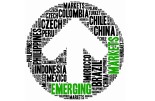MUFG: Inching closer to an inflection in EM sovereign debt markets
MUFG: Inching closer to an inflection in EM sovereign debt markets

Despite historic negative returns in 2022, excluding sovereigns in distress, EM credit spreads have been relatively resilient with sovereign defaults limited in scope, in line with our expectations. Active risk factors point to improved return asymmetry in EM dollar credit, yet conditions could prove challenging as the beta regime pivots to growth from inflation in 2023.
A softer US dollar – amid expectations of a policy induced US slowdown – should offer some breathing room for EM borrowers. Though, interest expense remains higher in vulnerable EMs, particularly, Egypt, Ghana, India, Nigeria and Pakistan. Expectations for slowing global growth and still higher US Treasury yields suggests continued modest headwinds for spreads next year, though the marked increase in yields this year should see total returns moving back into positive territory.
FX views
EM currencies have, on the whole, lost some of their recent upward momentum against the USD over the past week. The stand-out performers last week was the CLP (+4.0% vs. USD), PLN (+1.0%), PEN (+0.9%), BRL (+0.7%) and CZK (+0.6%), while KRW (-1.1% vs. USD), MYR (-1.1%), IDR (-1.0%), INR (-0.9%) and TWD (-0.8%) have underperformed. It has been notable that Asian currencies have corrected lower despite further positive COVID developments in China.
Trading views
Trades for 2023 seem to have a buy EM ring to them again. Reasons behind EM outperformance for 2023 seem to centre around a lower US, but is a US recessionary environment one where you really want to own EM? Positive arguments for owning EM seem to centre around cheap valuations or improving balance of payments going forward, but actual positive catalysts for owning EM seem a bit stretched – China upside growth picture could be one such catalyst.
Week in review
Saudi Arabia’s 2023 budget is targeting a narrowing in the fiscal surplus to 0.4% of GDP in 2023, from 2.6% of GDP in 2022. Inflation in Egypt rises from 16.2% y/y in October to 18.8% y/y in November – slightly below our expectations (19.1% y/y). The National Bank of Poland (NBP) left its policy rate unchanged at 6.75%, in line with our (and consensus) expectations – reinstating stability guidance. Finally, inflation in Russia fell from 12.6% y/y in October to 12.0% y/y in November as the normalisation of prices continued in the aftermath of the post-invasion overshoot.
Week ahead
This week, we have the rate decision in Russia (MUFG and consensus: unchanged at 7.50%), as well as inflation prints across the region in Czech Republic, Romania, South Africa and Israel. Beyond EMs, it’s a central bank super week across DMs, with the Fed, ECB, BoE, SNB and NOK all set to announce rate decisions. We also have US CPI and retail sales as well as CPI data releases across Europe for November.
Forecasts at a glance
Headwinds facing EMs are getting stronger as persistently high inflation prompts more hawkish monetary policy responses leading to further tightening of financial conditions and more sacrifices from growth.
Core indicators
EM securities attracted USD37.4bn in November 2022 – largest monthly inflows year-to-date – as abating inflationary pressures are setting the stage for a dovish Fed pivot and eventual end to the hiking cycle.









